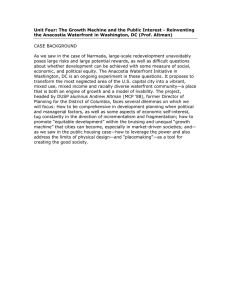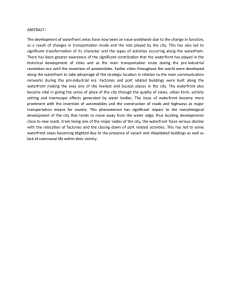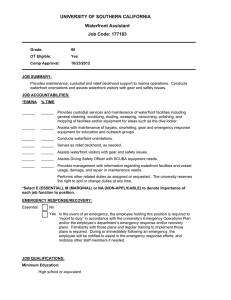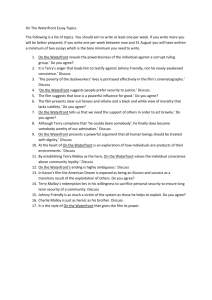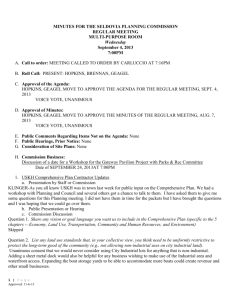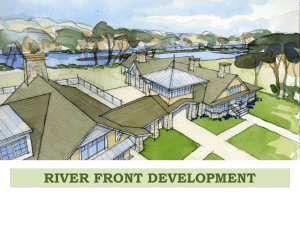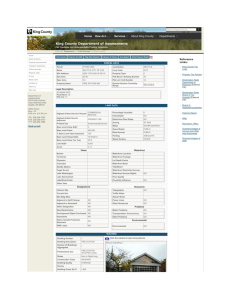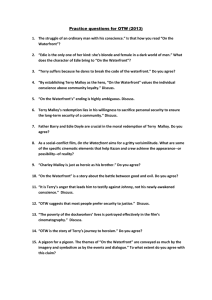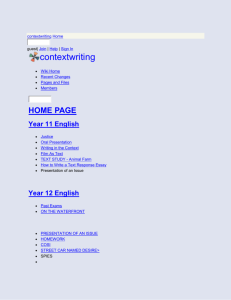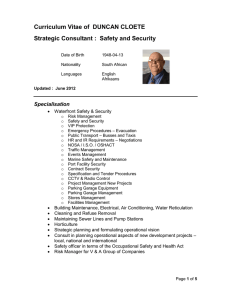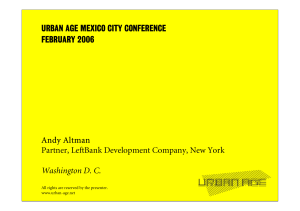11.027 City to City Session 7 Notes
advertisement
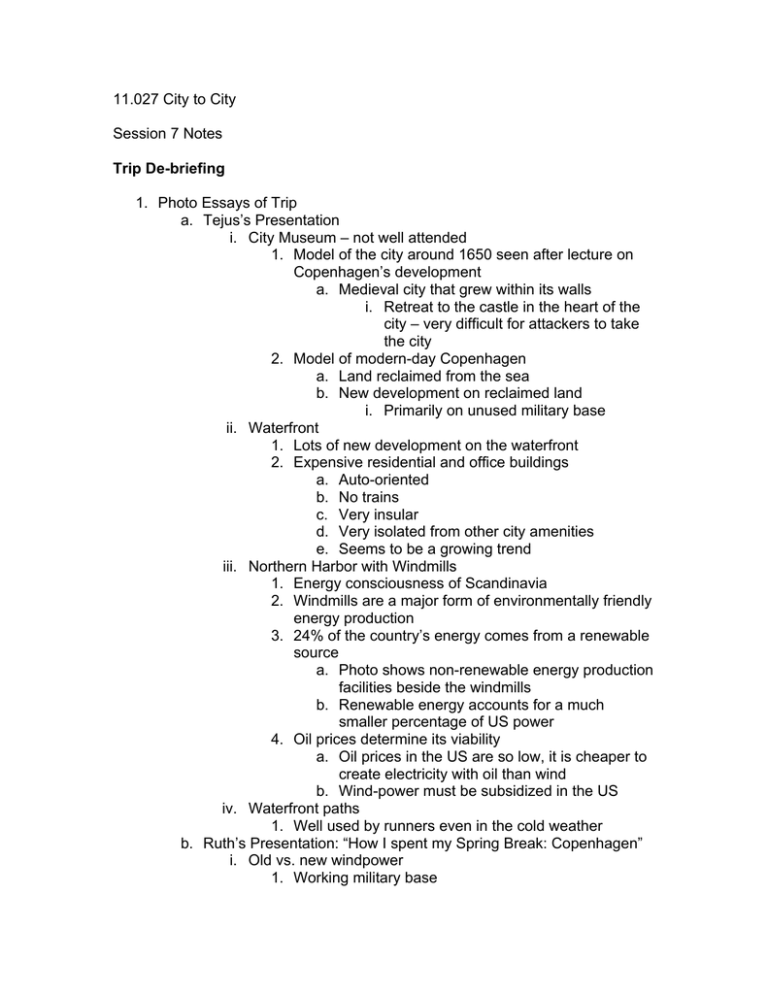
11.027 City to City Session 7 Notes Trip De-briefing 1. Photo Essays of Trip a. Tejus’s Presentation i. City Museum – not well attended 1. Model of the city around 1650 seen after lecture on Copenhagen’s development a. Medieval city that grew within its walls i. Retreat to the castle in the heart of the city – very difficult for attackers to take the city 2. Model of modern-day Copenhagen a. Land reclaimed from the sea b. New development on reclaimed land i. Primarily on unused military base ii. Waterfront 1. Lots of new development on the waterfront 2. Expensive residential and office buildings a. Auto-oriented b. No trains c. Very insular d. Very isolated from other city amenities e. Seems to be a growing trend iii. Northern Harbor with Windmills 1. Energy consciousness of Scandinavia 2. Windmills are a major form of environmentally friendly energy production 3. 24% of the country’s energy comes from a renewable source a. Photo shows non-renewable energy production facilities beside the windmills b. Renewable energy accounts for a much smaller percentage of US power 4. Oil prices determine its viability a. Oil prices in the US are so low, it is cheaper to create electricity with oil than wind b. Wind-power must be subsidized in the US iv. Waterfront paths 1. Well used by runners even in the cold weather b. Ruth’s Presentation: “How I spent my Spring Break: Copenhagen” i. Old vs. new windpower 1. Working military base ii. Old vs. new housing 1. View from the Round Tower with a ramp that wraps around it a. High density/low FAR buildings in the older city 2. New housing a. Grain silos converted into housing iii. One-punch card for all transportation 1. Waterbus, bus, train, etc. iv. Canals 1. Christiana in Copenhagen vs. Sweden a. Very different building types, very different feel b. Similar scale, same urban form v. Round objects 1. Sewer cover 2. Donated crystal orb a. Not accessible vi. Metro systems 1. Old commuter rails (S-Tog) 2. Regional trains, paid for by state (Commuter Rails) 3. New driverless system vii. Spirals: 1. Round Tower 2. Outdoor Spiral tower viii. Suburban Denmark 1. Dense urbanity to very rural 2. Ostan a. Land sold to support the train b. More like US Sprawl ix. Statues 1. Christiana street statue 2. Little mermaid statue x. Signs c. David’s Presentation i. Subway 1. Strategy: Build it and development will follow 2. The last stop is in the middle of nowhere ii. Canal iii. Entrance to the Free Town – self-governing 1. All areas are covered in murals a. No photography is allowed 2. No paved roads 3. Cobblestone areas 4. Small houses iv. New waterfront developments 1. No unified plan for the entire waterfront 2. Sections privately developed 2. 3. 4. 5. v. Library 1. Office Buildings reflect the library vi. Old City 1. Large network of pedestrian streets reclaimed by the city vii. Harbor Pool 1. Public swimming area in the harbor viii. Converted Silos 1. Grain silo converted into housing ix. Free-town 1. 100-year renewable lease with 70 years left on it x. Houseboats 1. Large trend 2. Controversial a. Where do you put them? i. Blocking views b. Mansion-boats c. Plan was made for the houseboats i. Only plan that covers the entire waterfront 3. New development under construction in the area xi. Jazz Band xii. Sweden Trip Evaluation Tunney Lee (professor emeritus in DUSP) a. Walking tour around Boston outside of class Presentations a. Final Presentations on May 11th Journals – Notebook collection today
